Introduction
Brief History of Tattooing
Tattooing boasts a rich and complex history that spans across various cultures and epochs. Originating over 5,000 years ago, the art of tattooing has been utilized for a multitude of reasons, including tribal identity, religious expression, and personal storytelling. In ancient Egypt, tattoos were often linked to strength and fertility, commonly seen among women as symbols of protection. Similarly, the indigenous peoples of the Pacific Islands employed tattoos as cultural markers, showcasing achievements and social status. Key historical milestones include:
- The Otzi Iceman: Discovered in the Alps, this mummified remains date back to around 3300 BC. His body featured over 60 tattoos, predominantly lines and cross patterns, believed to have held medicinal purposes.
- Japan’s Irezumi: Dating back to the Edo period (1603-1868), this elaborate form of tattooing became a symbol of resistance against societal norms, often illustrated with mythical themes and vibrant colors.
- Modern Evolution: The 20th century saw tattooing become mainstream, with a shift towards artistic expression, eventually leading to the diverse styles embraced today.
Understanding the history of tattooing not only highlights its significance but also showcases the artistry and cultural heritage that it carries across generations.

Traditional Tattoo Style
Origins and Characteristics
Following the exploration of tattooing’s rich history, traditional tattoo styles stand out as foundational artistic expressions. Arising from various cultures, traditional tattoos often convey deep meaning and heritage. Originating primarily from the Polynesian islands, traditional tattoos (or “tatau”) are a hallmark of identity, representing genealogy, status, and societal roles. The traditional process involves hand-tapping techniques, where artists use tools made from natural materials to embed ink into the skin. Key characteristics of traditional tattoo style include:
- Bold Linework: This style is defined by thick, strong lines, which serve to create striking visual contrast.
- Symbolic Imagery: Each design element typically holds significant meaning, depicting stories, beliefs, or lineage.
- Cultural Significance: It’s not just body art but often considered a rite of passage or a mark of honor within a community.
In other cultures, like Native American tribes or Japanese communities, traditional tattoos featured distinct styles and themes relevant to their respective histories. For instance, traditional Japanese tattoos often depict scenes from folklore with elaborate backgrounds and characters, symbolizing greater narratives of bravery and honor. These tattoo styles not only reflect the skills of the artist but also serve as cultural artifacts, preserving the legacies and beliefs of the societies they originate from.
Realism Tattoo Style
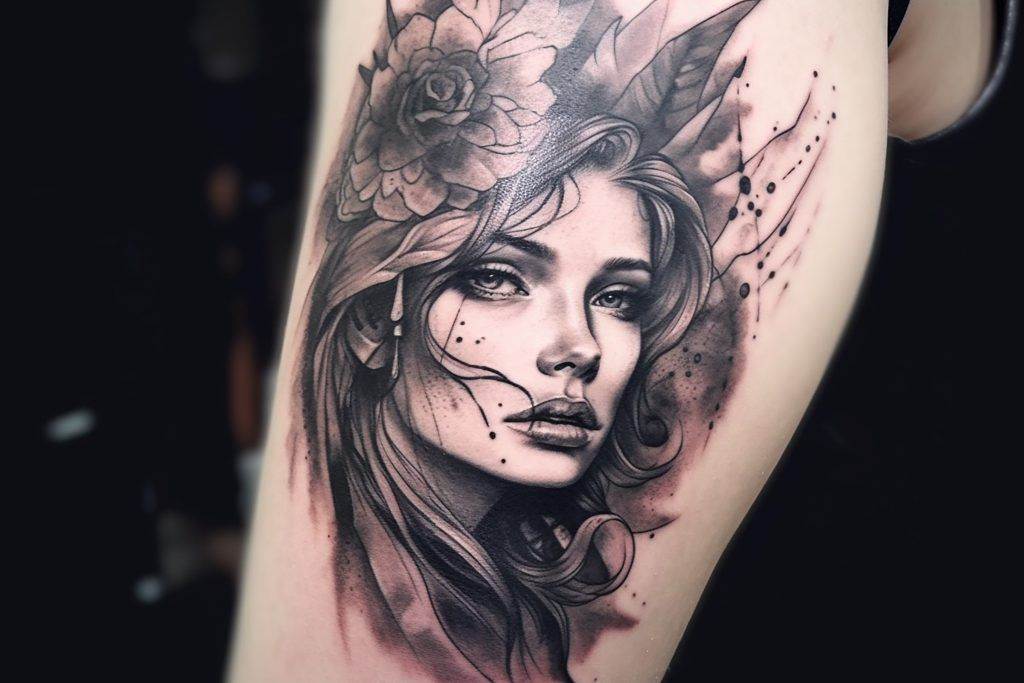 Funhouse Tattoo in Pacific Beach." class="wp-image-12979" srcset="https://funhousetattoosd.com/wp-content/uploads/2024/06/tattoo-design-realistic-portrait-loved-one-ai-generated-1024x683.jpg 1024w, https://funhousetattoosd.com/wp-content/uploads/2024/06/tattoo-design-realistic-portrait-loved-one-ai-generated-300x200.jpg 300w, https://funhousetattoosd.com/wp-content/uploads/2024/06/tattoo-design-realistic-portrait-loved-one-ai-generated-768x512.jpg 768w, https://funhousetattoosd.com/wp-content/uploads/2024/06/tattoo-design-realistic-portrait-loved-one-ai-generated-1536x1024.jpg 1536w, https://funhousetattoosd.com/wp-content/uploads/2024/06/tattoo-design-realistic-portrait-loved-one-ai-generated-2048x1365.jpg 2048w, https://funhousetattoosd.com/wp-content/uploads/2024/06/tattoo-design-realistic-portrait-loved-one-ai-generated-250x167.jpg 250w" sizes="auto, (max-width: 1024px) 100vw, 1024px" />
Funhouse Tattoo in Pacific Beach." class="wp-image-12979" srcset="https://funhousetattoosd.com/wp-content/uploads/2024/06/tattoo-design-realistic-portrait-loved-one-ai-generated-1024x683.jpg 1024w, https://funhousetattoosd.com/wp-content/uploads/2024/06/tattoo-design-realistic-portrait-loved-one-ai-generated-300x200.jpg 300w, https://funhousetattoosd.com/wp-content/uploads/2024/06/tattoo-design-realistic-portrait-loved-one-ai-generated-768x512.jpg 768w, https://funhousetattoosd.com/wp-content/uploads/2024/06/tattoo-design-realistic-portrait-loved-one-ai-generated-1536x1024.jpg 1536w, https://funhousetattoosd.com/wp-content/uploads/2024/06/tattoo-design-realistic-portrait-loved-one-ai-generated-2048x1365.jpg 2048w, https://funhousetattoosd.com/wp-content/uploads/2024/06/tattoo-design-realistic-portrait-loved-one-ai-generated-250x167.jpg 250w" sizes="auto, (max-width: 1024px) 100vw, 1024px" />Techniques and Artists
Building upon the foundational elements of traditional tattoo styles, realism tattoo artistry has emerged as one of the most compelling forms of body art. This unique style is marked by its ability to replicate lifelike images with stunning detail, making each piece a visual masterpiece. The techniques employed in realism tattoos are diverse and sophisticated, requiring a specialized skill set that sets realism artists apart. Some key techniques include:
- Shading and Highlights: To achieve a three-dimensional appearance, artists skillfully utilize shading to create depth. Highlights are added to simulate light reflections, enhancing the lifelike quality of the design.
- Color Theory: Realism tattoos often employ a careful balance of color, blending shades to match the subject accurately, whether it’s a portrait, an animal, or an intricate landscape.
- Detail Work: Intense focus on minute details, such as the texture of skin or the reflection in eyes, is fundamental. The subtler the details, the more realistic the outcome.
With a growing interest in this style, it has sparked a myriad of talented artists who excel in capturing life on skin. Their expertise in realism not only transforms ideas into art but also brings personal expressions of love, loss, or memory to life. Each tattoo tells a unique story, allowing individuals to wear their emotions and experiences with pride. As realism continues to evolve, it retains its essence, making each piece a lasting testament to human connection and artistry.
Neo-Traditional Tattoo Style
As artistic expression continues to evolve, neo-traditional tattoo style emerges as a captivating blend of traditional techniques and contemporary aesthetics. Building upon the foundation laid by traditional tattoos, neo-traditional art infuses modern flair and creativity, offering a fresh take on the classic.
Distinctive Features of Neo-Traditional Tattoos
One of the most appealing aspects of neo-traditional tattoos is their distinct visual characteristics. Artists often utilize:
- Bold Linework: Similar to traditional tattoos, but with a more varied thickness, allowing for greater depth and detail.
- Vibrant Color Palettes: This style embraces a wider range of colors than traditional tattoos, often employing gradients and softer shades to create a more dynamic look.
- Whimsical Elements: Neo-traditional designs are known for incorporating fantastical and stylized motifs, merging realism with imaginative aspects. Think of intricate floral patterns interwoven with animals or mythical creatures.
The versatility of neo-traditional tattoos makes them a popular choice for those seeking unique and vibrant body art. They allow individuals to express personal narratives while still honoring the age-old craft of tattooing. As this style continues to gain momentum, it encourages artists and enthusiasts alike to explore their creativity, resulting in endlessly diverse and captivating designs that resonate with the modern sense of self-expression. Whether it’s a bold portrait or a delicate scene, neo-traditional tattoos provide a canvas for storytelling, blending history with a contemporary twist.
Japanese Tattoo Style
Following the exploration of neo-traditional tattoos, Japanese tattoo style presents a fascinating journey into the rich tapestry of cultural art. Renowned for its intricate designs and deep historical significance, Japanese tattooing, also known as “Irezumi,” has captivated audiences for centuries.
Underlying Themes and Symbolism
Japanese tattoos are distinguished not just by their aesthetic beauty but also by the layered meanings embedded within their artwork. Some key elements include:
- Iconic Motifs: Designs often feature legendary creatures such as dragons, koi fish, and phoenixes. Each of these elements carries symbolic weight; for instance, koi fish represent perseverance and strength, while dragons symbolize wisdom and power.
- Nature as a Backdrop: Background elements like waves, cherry blossoms, and peonies enrich the main motifs. These natural components can convey transience and beauty, aligning with the Japanese philosophy of “Mono no Aware,” which reflects on the impermanence of life.
- Full-Body Coverage: Traditional Japanese tattoos often cover large swaths of the body, including the back, arms, and chest. This comprehensive approach creates a cohesive narrative, transforming the body into a canvas telling a visual story.
The artistry involved in Japanese tattoos is unparalleled, requiring exceptional skill in both design and execution. As this style continues to command respect in modern tattoo culture, it serves not only as stunning body art but also as a profound testament to cultural history and tradition. Those who choose Japanese tattoos often do so with a sense of reverence, appreciating the connection to an age-old tradition that celebrates both artistry and meaning.
Blackwork Tattoo Style
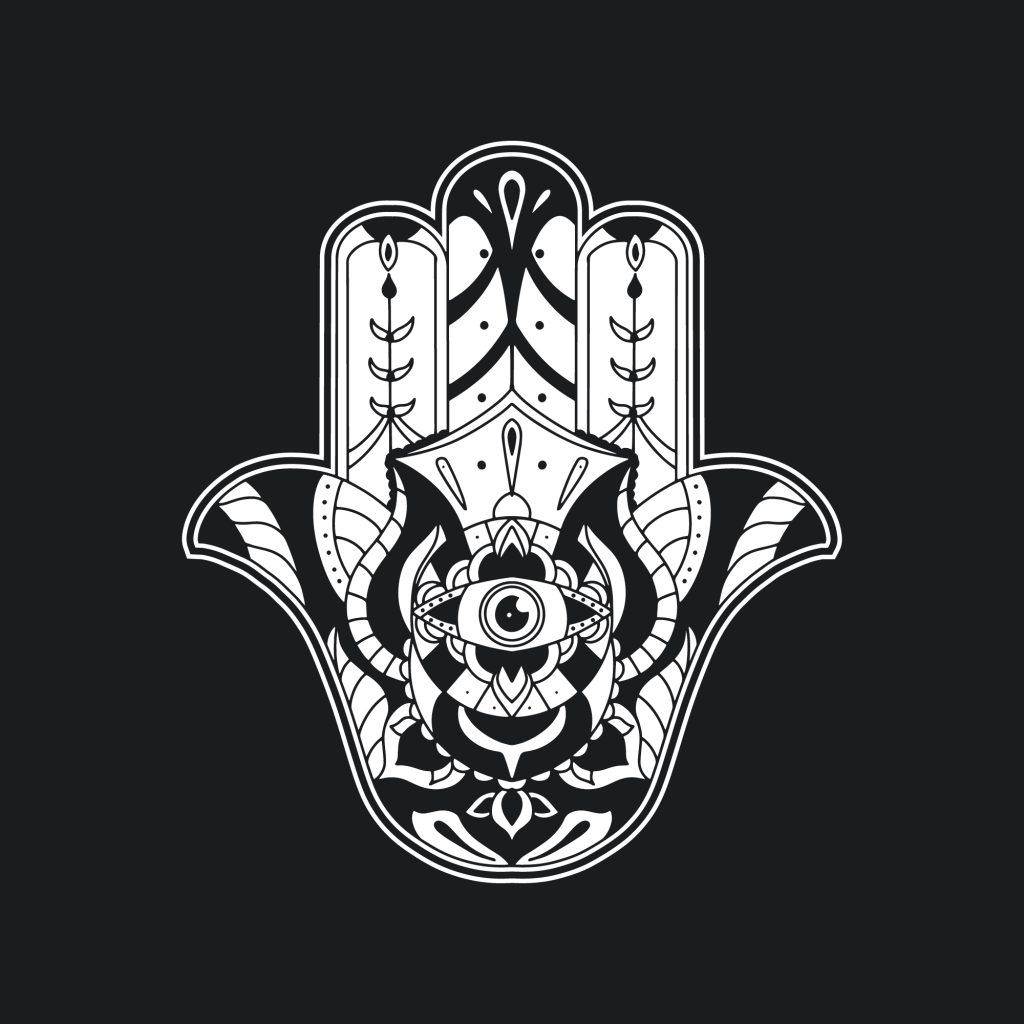
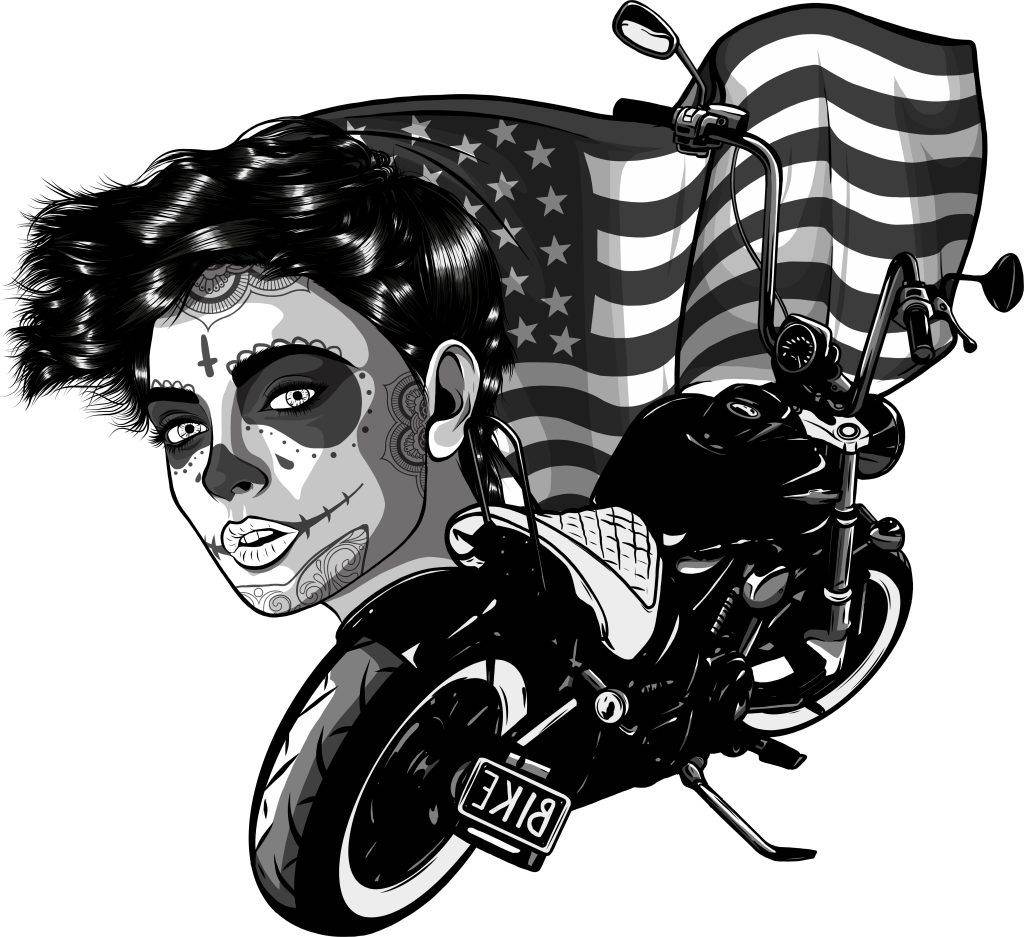
Transitioning from the captivating world of Japanese tattoos, blackwork tattoo style presents a bold and striking approach to body art. Defined by its heavy use of black ink, this style emphasizes stark contrast and intricate designs that capture attention and evoke emotion.
Defining Features and Techniques
Blackwork tattoos make a powerful statement through the following characteristics:
- Solid Black Inking: As the name suggests, blackwork relies on solid black ink, often resulting in striking visuals that stand out against the skin. This can range from bold geometric shapes to complex patterns.
- Geometric and Abstract Designs: Many blackwork pieces incorporate geometric patterns that create a sense of order and symmetry. Artists often experiment with shapes and lines, producing intricate designs that draw the eye.
- Negative Space Utilization: This style is notable for its clever use of negative space, where the uninked portions of skin serve as part of the design. This technique adds depth and complexity, inviting closer examination.
Blackwork tattoos appeal to those who appreciate minimalist elegance and the dramatic aesthetic that solid black ink provides. This style often transcends traditional tattoo boundaries, evolving into modern interpretations that embrace both artistry and personal expression. As blackwork continues to grow in popularity, it reflects a shift towards minimalist design in the tattoo world, encouraging individuals to redefine their body art in a unique and visually stunning way. Whether through bold statements or intricate patterns, blackwork tattoos are a captivating choice for anyone looking to express themselves through the power of ink.
Watercolor Tattoo Style
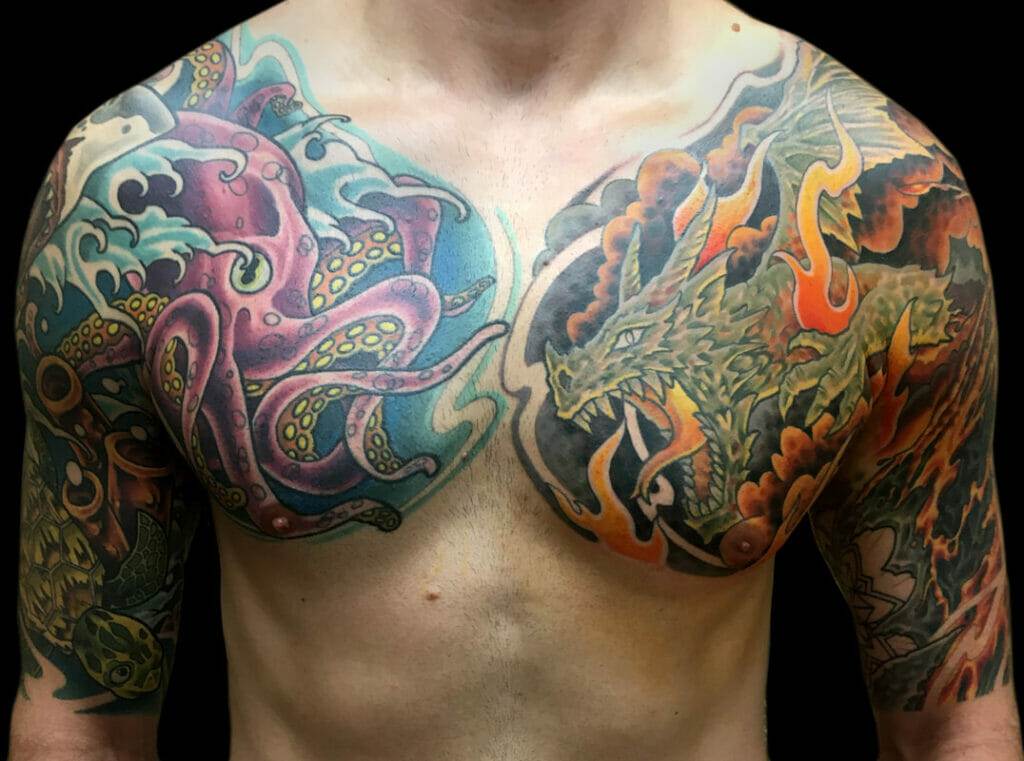
As we move from the bold aesthetics of blackwork tattoos, watercolor tattoo style offers a refreshing and vibrant shift in the world of body art. Inspired by the artistry of watercolor painting, this style captures the fluidity and spontaneity of the medium, bringing a sense of movement and lightness to the skin.
Characteristics and Techniques of Watercolor Tattoos
Watercolor tattoos stand out due to their distinctive features which often include:
- Soft Edges and Blended Colors: Unlike traditional tattoos, watercolor designs typically have softer edges that mimic the brushstrokes of painting. This creates a dreamy, ethereal quality as colors blend seamlessly into one another.
- Vibrant Color Palettes: Watercolor tattoos often utilize a wide spectrum of colors, from bright and bold to subtle pastels. This allows for creative expression that can deeply resonate with the wearer’s personality and emotions.
- Impressionistic Style: Rather than focusing on strict outlines, watercolor tattoos often appear more abstract and impressionistic. This frees artists to explore their creativity, resulting in unique and individualized pieces.
These tattoos can serve as stunning representations of nature, animals, or abstract art, allowing for greater freedom of interpretation. Watercolor tattoos have gained popularity for their artistic flair and the emotional connections they can evoke. As an innovative and contemporary form of tattooing, this style empowers individuals to wear art that reflects their vibrant spirit, making it a delightful choice for those seeking a distinguishing piece of body art.
Dotwork Tattoo Style
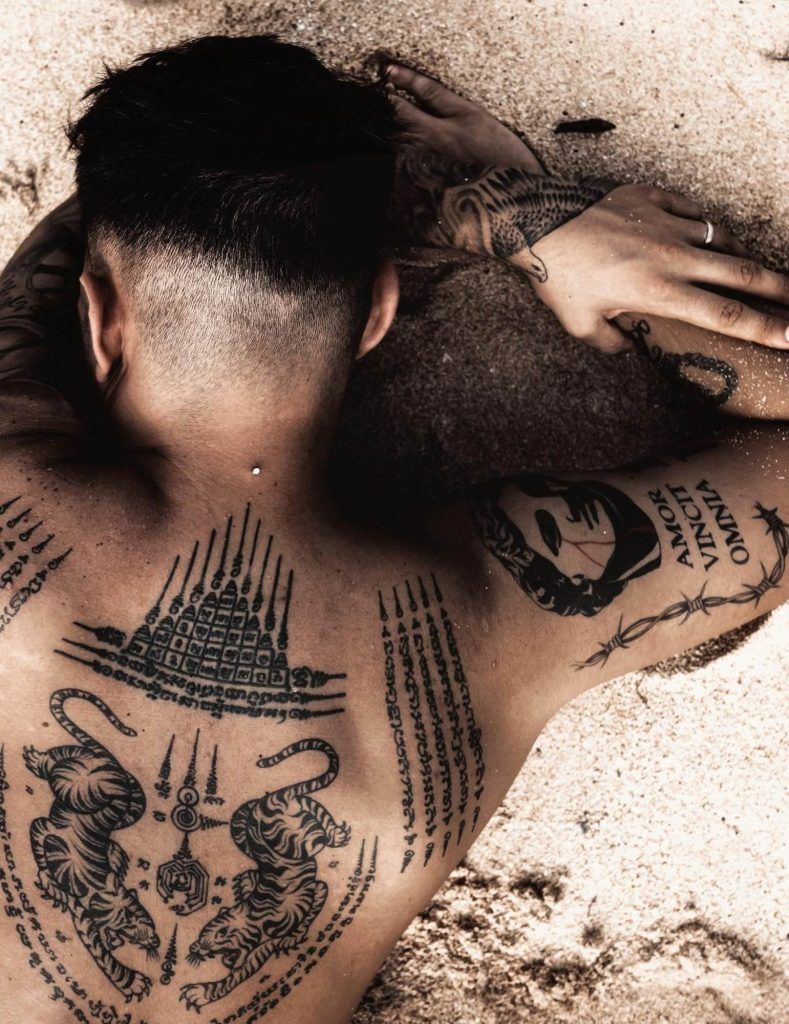
Continuing from the artistic flow of watercolor, dotwork tattoo style introduces a unique and meticulous approach to body art that has gained considerable acclaim in recent years. Characterized by its use of tiny dots to create stunning visuals, dotwork is both a technique and an art form, allowing for precision and depth in design.
Defining Features and Techniques in Dotwork Tattoos
Dotwork tattoos stand out with their intricate details and striking effects, featuring:
- Pointillism Technique: Artists utilize a pointillism technique, where dots are strategically placed to form images, patterns, and gradients. This method requires immense patience and precision, resulting in breathtaking designs.
- Geometric Patterns: Commonly used in dotwork, geometric designs often blend shapes like triangles, circles, and polygons. This creates a mesmerizing visual complexity while enhancing the concept of symmetry and balance.
- Shading and Depth: Dots can be grouped together to create shading effects, offering a sense of depth that makes the tattoo come alive. This can transform simple designs into three-dimensional illustrations.
Dotwork tattoos appeal to those who appreciate the beauty of detail and the artistry involved in creating an image from countless tiny points. The unique charm of dotwork lies in its versatility; whether combined with elements from other styles or used independently, it offers a modern and sophisticated touch to body art. This approach encourages individuals to explore the intricate art of tattooing from a fresh perspective, celebrating both the artist’s craft and personal expression.
Tribal Tattoo Style
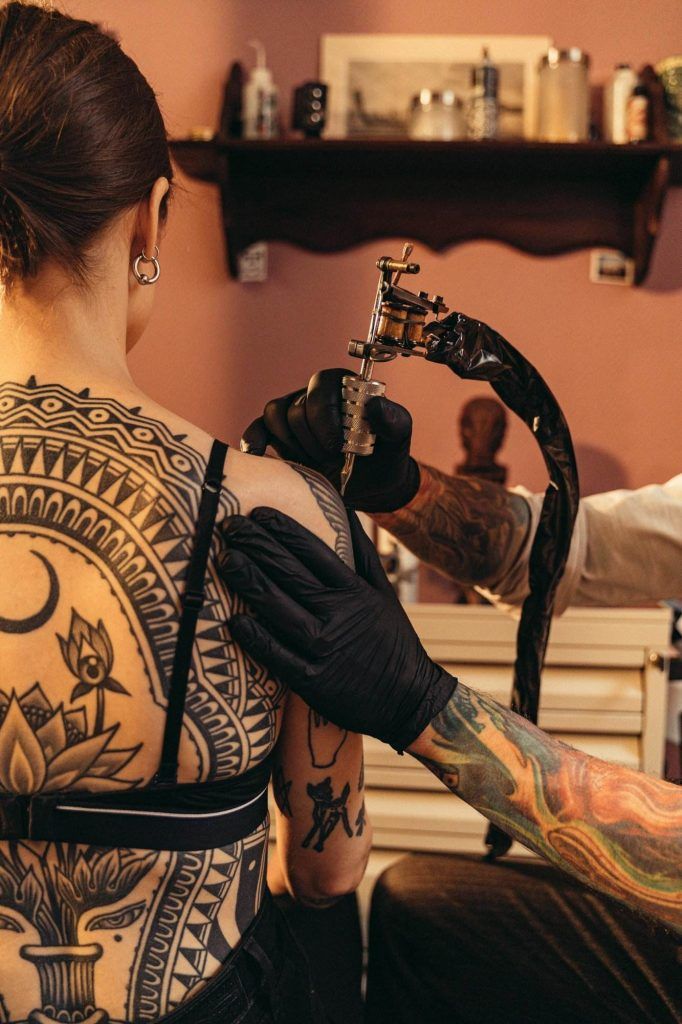
Transitioning from the meticulous precision of dotwork, tribal tattoo style invites us into a world of ancient traditions and cultural significance. With its roots tracing back thousands of years, tribal tattoos have served various purposes, from marking identity to conveying spiritual beliefs.
Characteristics and Cultural Significance of Tribal Tattoos
Tribal tattoos are characterized by their bold black lines and patterns that often draw inspiration from the heritage of indigenous cultures around the world. Key features include:
- Bold and Abstract Designs: These tattoos typically consist of thick, black lines and geometric shapes, creating striking visuals that often work together to form larger, meaningful patterns.
- Cultural Symbolism: Each design element often holds significant meaning, representing aspects of the wearer’s identity, such as lineage, achievements, or spiritual beliefs. For example, Polynesian tribal tattoos can indicate social status and personal history.
- Connection to Nature: Many tribal designs incorporate motifs inspired by nature, such as waves, animals, or plants, symbolizing a deep connection to the natural world.
Tribal tattoos offer a powerful way for individuals to express their heritage while honoring the artistry that has evolved through generations. As this style continues to thrive, it encourages modernization and reinterpretation, allowing for a blend of traditional significance with contemporary aesthetics. This dynamic interplay makes tribal tattoos not just a form of body art but also a way for individuals to connect with their roots and share their stories through ink.
Geometric Tattoo Style
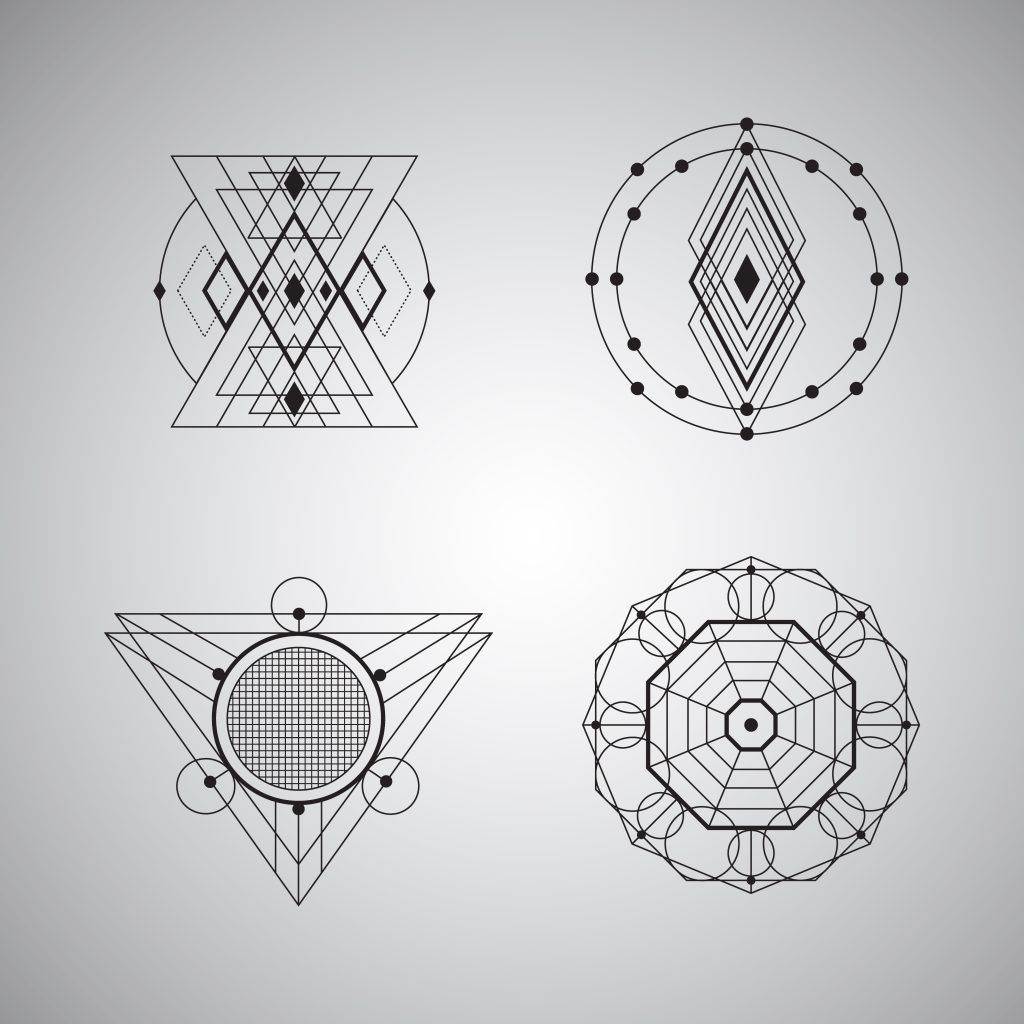
As we transition from the rich historical context of tribal tattoos, the geometric tattoo style comes forward as an exploration of modern artistry, embracing the beauty of lines, shapes, and symmetry. This style has gained popularity for its unique ability to intertwine simplicity with intricate detail, creating compelling visuals that resonate with a contemporary audience.
Key Features and Aesthetic Appeal of Geometric Tattoos
Geometric tattoos are defined by their use of geometric shapes to form designs that often embody abstract concepts. Notable features include:
- Symmetry and Balance: Many geometric tattoos exhibit a strong emphasis on symmetry, creating visually harmonious patterns that are aesthetically pleasing. This balance can evoke feelings of tranquility and order.
- Minimalist Approach: The simplicity of geometric designs allows for a less cluttered, more refined look. Often, these tattoos use black ink for a striking contrast against the skin, which enhances their visual appeal.
- Versatility: Geometric designs can be customized to reflect personal meanings. They may range from intricate mandalas to simple triangles, allowing for endless creativity and personal interpretation.
This style appeals to those who appreciate modern art and want their body art to reflect a contemporary yet timeless aesthetic. Whether coupled with other styles for added depth or left as standalone pieces, geometric tattoos encourage individuals to explore their creativity and find personal significance in the artistry of shapes and lines. As a canvas for self-expression, geometric tattoos embody both beauty and meaning in an ever-evolving art form.
